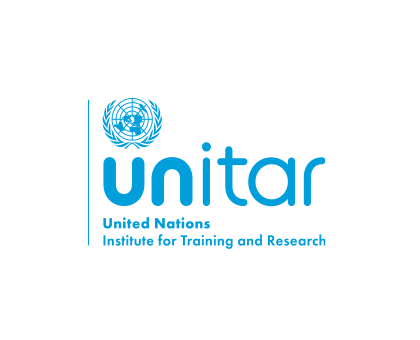
Geospatial Information Technology (GIT) for Operational Planning and Decision-making in Disaster Risk Management (DRM)
GIZ - German Development Agency, The Indian Ocean Rim Association (IORA)
This 2-week introductory online course, hosted by the Indian Ocean Rim Association (IORA) in partnership with Deutsche Gesellschaft für Internationale Zusammenarbeit (GIZ) GmbH, aims to introduce participants with the basic concepts and terminologies of Disaster Risk Reduction and Geospatial Information Technology including an overview of relevant GIT applications for DRR.
The Indian Ocean Region (IOR) is sometimes called the “World’s Hazard Belt” as it is prone to disasters, from both natural and man-made hazards. Natural hazard under the group of Climatological (cyclones and droughts), Geological and Tectonic (earthquakes and tsunamis) and Hydrological (floods and tidal surges) origins are very frequent in the region. According to the UNESCAP, around 50% of disasters from natural hazards occurring in this region are climatogenic and seismogenic in nature.
The year 2018 and 2019 saw tsunamis and earthquakes in Indonesia, severe droughts in Madagascar, floods and landslides in India, seasonal cyclones in the Islands of the Indian Ocean, and many more calamities. The 2008 Super Cyclone in Myanmar and the December 2004 Indian Ocean earthquake and tsunami will forever be etched in public memory. The loss of lives as well as the damage to property and the natural environment is incalculable. The domino effect on poverty, famine, societal imbalance, and other resultant tragedies cannot be discounted. Management of disaster risks is particularly urgent in the IOR because it is home to small island nation states and developing littoral countries with high population densities, which are hit much harder due to the lack of resources and assets to handle the calamity. Moreover, the region is also witnessing an increasing link of natural hazards to climate change with increasing sea levels and rising water temperatures. Disaster Risk Management (DRM) is therefore an area of collective interest to IORA Member States. (cit. IORA/DRM)
Geospatial Information Technology (GIT) can be a very useful tool in support to the whole DRM cycle starting from the preparedness to response, recovery and reconstruction. GIT has proven to be efficient for implementing DRM activities at national, regional, and local scales. Quantifying risk and expected future losses are a key step in any DRM program. Also, the outputs and scenarios of a risk assessment contribute to structuring overall risk reduction policies and planning. Geospatial risk assessment can be performed with GIT tools and techniques which can quantify risk and identify the locations in need of risk reduction measures. The role of GIT does not stop there; in the immediate aftermath of a disaster, satellite based rapid response analysis enables the emergency response agencies to respond in a better and coordinated way.
- Recall the evolution of global DRR frameworks and recognise the importance of “Sendai Framework for Disaster Risk Reduction (2015-2030)” in achieving the “Sustainable Development Goals (2015-3030).”
- Define the key concepts and terminologies related to Disaster Risk Reduction (DRR) and Disaster Risk Management (DRM).
- Describe the basic concepts and terminologies of Geospatial Information Technology (GIT).
- Describe the spatial and dynamic nature of disaster risk and recall the different methods for disaster risk assessment.
- Recognize the benefits of using GIT in different phases of DRM cycle.
The course will provide participants with a theoretical understanding of basic principles of Disaster Risk Reduction and Geospatial Information Technology through interactive lectures and assessments. Successful participants will be eligible to apply to attend a second face-to-face training with focus on technical-practical skills where participants will be challenged to solve DRR problems by developing decision support tools.
Modality: Online Self-Paced with remote and live support.
Expected Workload: 6-8 hours
Certificate Requirement: Completion of five modules by 4 October 2021. Main modules activities include interactive lectures, quick quizzes, and final course questionnaire. Participants will have the opportunity to engage in Drop-In Q&A Live Sessions and online discussion board as needed.
The course is designed to accommodate selected policy makers/officials and regional experts from IORA Member States, IORA Secretariat and Dialogue Partners with a variety of backgrounds and with professional experience on DRM. Previous knowledge on DRM is preferable while previous knowledge on Geospatial Information Technologies is not required. A gender balance among participants is strongly encouraged.

